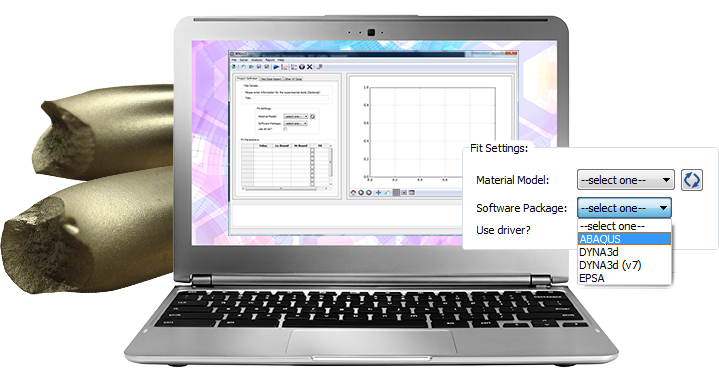
VistaDam provides a reliable and efficient fracture prediction methodology for large-scale shell structures…

VistaFire employs a thermomechanical constitutive model to simulate the behavior of structures exposed to fire…

VistaCal allows calibration of VistaDam, VistaFire, and many other commonly used models to experimental test data…
New Technical Challenges for Industrial Applications
The current pace of technological innovation in the field of structural engineering has revolutionized engineering capabilities, stirring a flood of new design challenges, including:
- The design, certification, and operation of new low-weight and high-speed naval vessels to support a wide range of missions
- Vehicle lightweighting to meet new emission standards requiring the complete redesign of automotive bodies and powertrains
- Hydraulic fracturing techniques to extract shale gas, as well as oil and gas extraction from deep reservoirs
- New composite aircraft design and operation
Addressing the technical challenges related to the design and operation of new large-scale structural systems (e.g., ships, aircraft, automobiles, and pipelines) requires the development and transition of new design and analysis methodologies, including reliable failure-prediction capabilities. VistaMat Suite is specifically formulated to address these challenges.
The goal of the VistaMat Suite modules is to enable production-type calculations without the need to invest significant time in studying the theoretical details of simulated phenomena. The increased accuracy of failure analyses conducted with VistaMat modules reduces product/structure development time, yielding significant cost savings.
Latest Theoretical Developments in Material Failure
The theoretical foundations of VistaMat Suite are based on the latest experimental observations and fundamental failure mechanisms. The constitutive models that compose VistaMat have been formulated to accurately represent the most important phenomena and their interactions, including the effects of multiaxial stress and thermomechanical coupling.
Bridging the Length Scales
The phenomenological constitutive models were developed based on micromechanically observed mechanisms and formulated in the shell mechanics framework. This allows accurate and efficient modeling of large-scale structures, without the very fine meshes that are typically used for fracture prediction.

Experiment (left image): A. Benzerga, J.B. Leblond, ‘Ductile fracture by void growth to coalescence’; Advances in Applied Mechanics, 44 (2010)
Versatility
The “user material” modules, VistaDam and VistaFire, work with many commercial finite element (FE) packages (Abaqus, Dyna3D, ASAP, NESM, NLFlex, EPSA). VistaMat Suite will work hand-in-hand with the tools commonly used for advanced simulations.
Automated, Consistent Calibration
VistaCal not only permits model calibration to be automated, but also does so in a consistent manner. VistaCal solves optimization problems by minimizing the difference between experimentally observed and simulated behavior (given set of model parameters), delivering a consistent calibration framework that eliminates guesswork. The software includes an internal database that allows experimental data and associated “fits” to be stored for future use, making VistaCal an institutional knowledge base repository.
Read More
Modeling Fracture in Large Scale Shell Structures - Woelke & Abboud, Journal of Mechanics and Phytsics of Solids 2012



